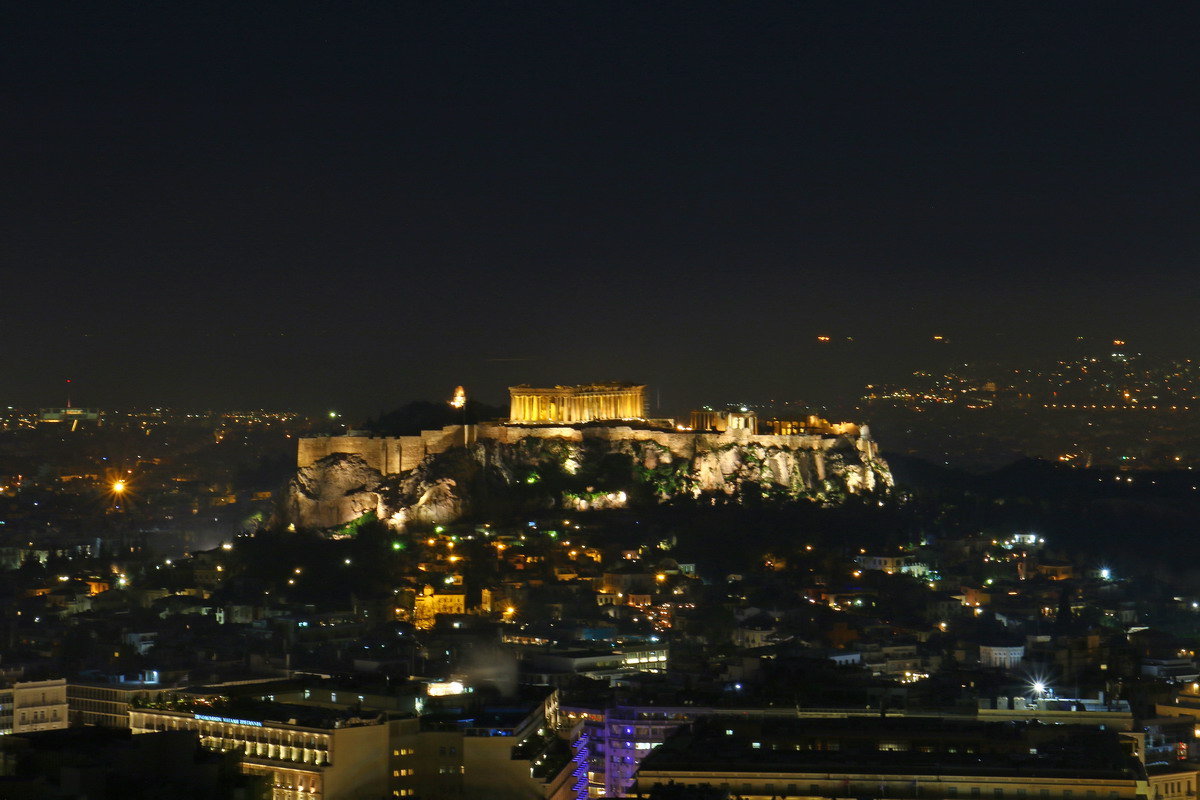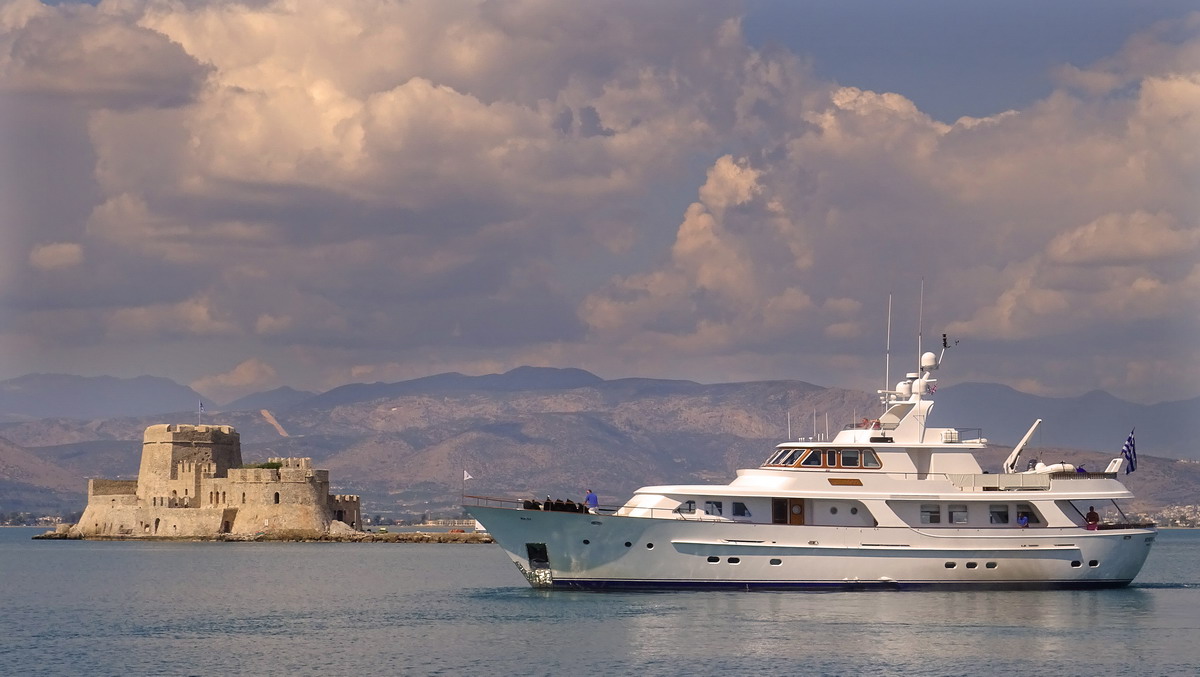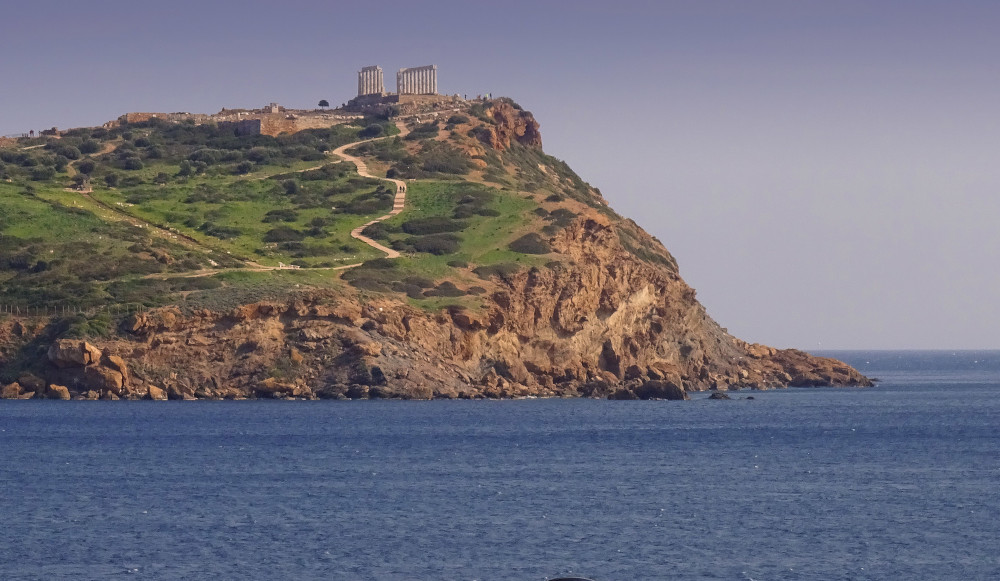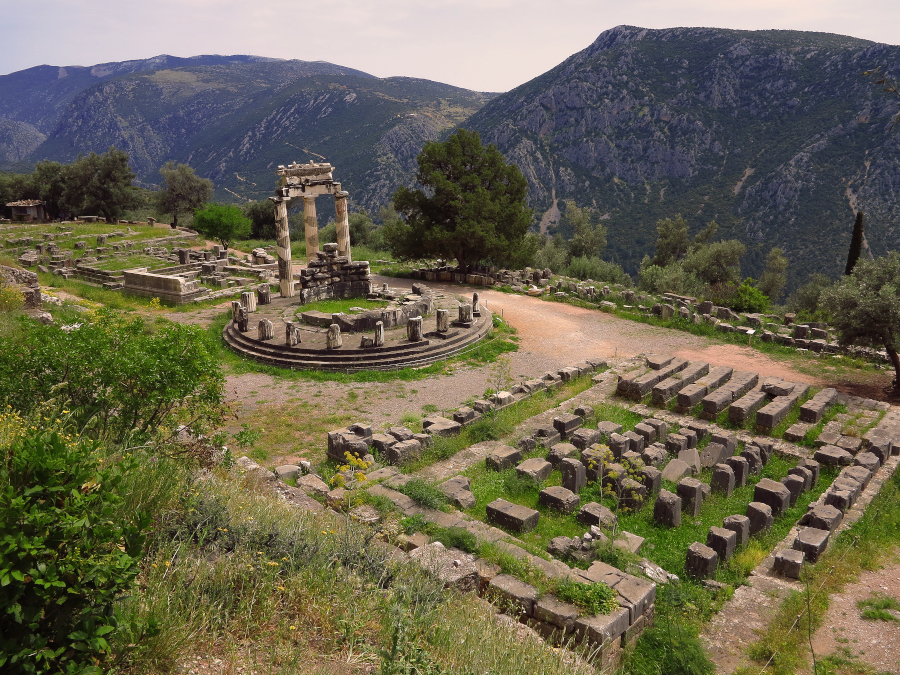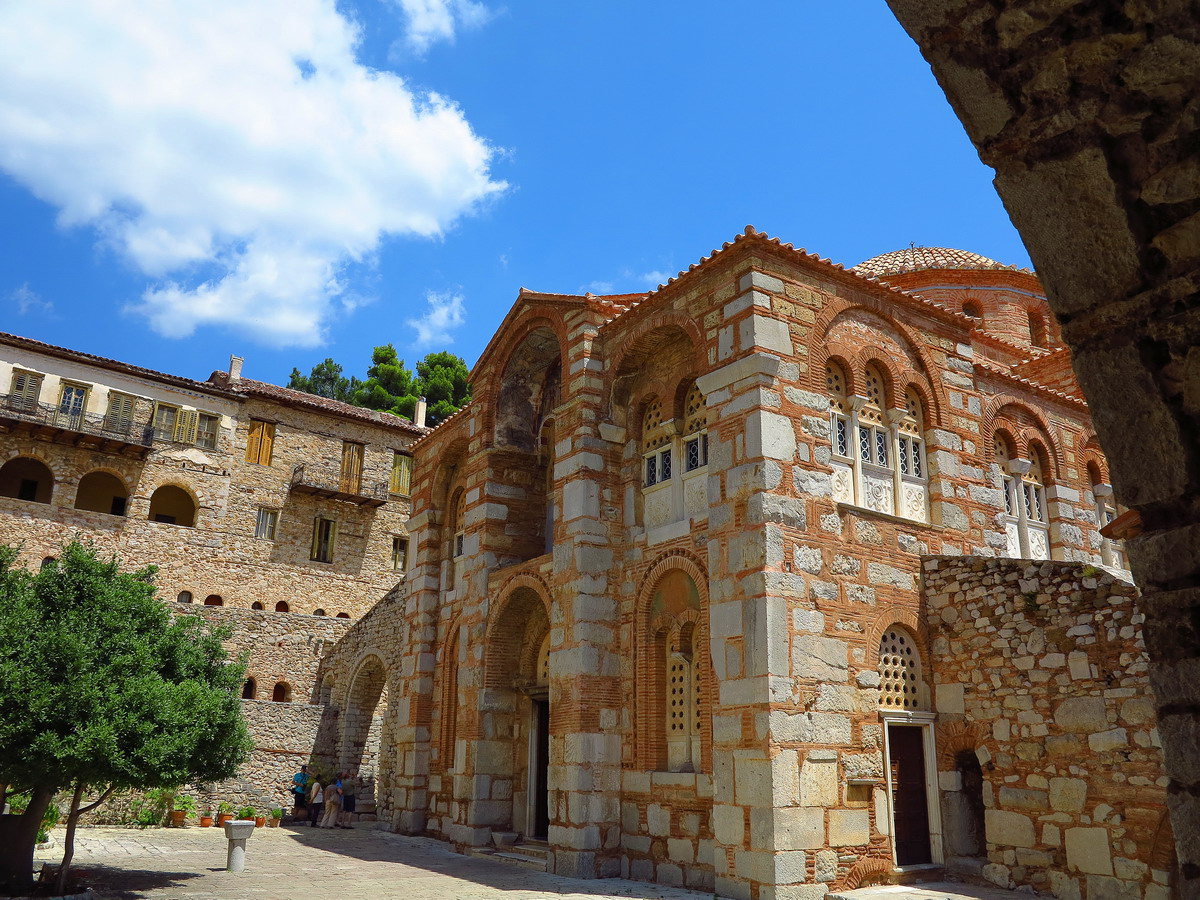Sightseeing
If you visit Athens and have time available, we can help you explore the Greek mainland more. The country may be small in size, but there are many interesting destinations both in the Peloponnese and in mainland Greece. We refer to archaeological sites and museums, traditional settlements, places of religious interest, and of course, unique landscapes that form the country's diverse terrain.
Our Options
Half Day Tours
(4hrs to 6hrs)
During a Half Day Tour we can visit 1 of the bellow mentioned destinations. Please refer to each destination for more details.
Your free time for walking around, launch etc. will be approximately 1 hour.
Full Day Tours
(6hrs to 10hrs)
During a Full Day Tour we can visit 2 or more destinations. Please refer to each destination for more details.
Your free time for walking around, launch etc. will be approximately 2 hours.Our main concern is for you to make the best of the tours we provide. Please don't hesitate to contact us for any further information / request you may require!!!
Our Destinations
Attica
Elefsina is a city in the Prefecture of Attica, approximately 20 km from Athens at Saronic Gulf’s coastline. It has an area of 20 km² and a population of 24,910 inhabitants. In antiquity Eleusis, along with Athens, Olympia, Delphi, and Delos, were the 5 sacred cities of Ancient Greece, and the Sacred Road ended. In ancient times Eleusis was for 2000 years (1600 BC-400 AD) one of the five sacred cities with the Eleusinian Mysteries attracting pilgrims from all over the then known world - one of the most important sanctuaries was dedicated to the worship of Goddess Demetra and her daughter Persephone. . The name of the city became even more famous thanks to the great tragic poet Aeschylus (one of the three great tragedians of antiquity) . It was 14 centuries after which Eleusis fell into obscurity. Today Eleusis is the town where the majority of crude oil in Greece is imported and refined.
Tour Time Schedule :
Drive from Athens to Eleusis: (45mins)
Visit Eleusis Site and Museum: (1hr 30mins)
Drive back to Athens: (45m)
It is an alternative way to perform the equivalent
daytime city tour. It includes a drive, around the main Greek port of Piraeus passing by the most important points of the area
(the Port of Zea, the Microlimano port etc.). Also, a drive through the center
of Athens passing by The Acropolis, The Temple of Zeus, The Panathenaic Stadium,
The Tomb of The Unknown Soldier in front of the
Parliament, The “Athenian Trilogy” [consisted of three neoclassical
public buildings: Academy, National Library, First University of
Athens], The Hill of Lycabettus (short stop),
and finally The New Olympic Stadium (built for the
2004 Olympic Games).
*You can also have dinner in one of the most popular tavernas in the area of
Plaka with live Greek music and Greek folk dances.
· Includes a visit to:
The Acropolis of Athens (the
archaeological site includes the temple of “Parthenon” dedicated
to Athena Parthenos, the temple of “Erechtheion” dedicated
to Athena Polias, “Propylaea” the monumental entrance
to the sacred area, “Temple of Athena Nike” dedicated
to Athena-Apteros Nike [Wingless Victory], “Caryatides”, “Herodeon Theater”, the ruins of the “Theater of Dionysus” and finally “Areopagus” [Mars Hill]).
The Temple of Zeus (which is the largest ancient temple in Greece decorated in the Corinthian style).
The Panathenaic Stadium (Kallimarmaro): It’s the stadium that hosted the first modern Olympic Games of 1896. It was built in 1863 upon the ruins of a real ancient stadium.
The Hill of Lycabettus, the Old Palace, The Tomb of The Unknown Soldier in front of The Parliament & The Changing of The Guards, and finally the Plaka district (Plaka is built at the foot of the Acropolis. It is Athens’ oldest and most picturesque neighborhood. It has an extended network of stone-paved pedestrian’s ways, and is full of traditional gyros restaurants, tavernas and souvenir shops).
Tour Time Schedule:
Visit to Acropolis (around 1h 30mins)
City drive to Temple of Zeus, Panathenaic Stadium, Hill of Lycabettus, Old Palace, Tomb of The Unknown Soldier & Changing of The Guards (1h30mins)
Free time to walk around in Plaka (1.0 hrThe cape of Sounion is the southest tip of Attica region (the administrative county of Athens). Besides the breathtaking panoramic view of the Aegean sea and the Saronic gulf islands, the visitor has the chance to visit the archaeological site of the Temple of Poseidon (built in the 5th century B.C.). Going there includes a scenic drive along the south-west coastline of Attica passing through some of Athens most beautiful southern suburbs like Glyfada, Lake of Vouliagmeni, and Varkiza. Visitors can also enjoy their lunch or dinner at one of the dozens of traditional seaside restaurants and fish taverns.
Tour Time Schedule :
From Athens (or Piraeus) to Cape Sounion :(1h15mins)
Lake of Vouliagmeni : (15mins)
Temple of Poseidon : (45mins)
Lunch or Dinner : (1h30mins)
Drive back to Athens (or Piraeus) : (1h15mins)
Includes a visit to:
The Acropolis of Athens (the
archaeological site includes the temple of “Parthenon” dedicated
to Athena Parthenos, the temple of “Erechtheion” dedicated
to Athena Polias, “Propylaea” the monumental entrance
to the sacred area, “Temple of Athena Nike” dedicated
to Athena-Apteros Nike [Wingless Victory], “Caryatides”, “Herodeon Theater”, the ruins of the “Theater of Dionysus” and finally “Areopagus” [Mars Hill]).
The Temple of Zeus (which is the largest ancient temple in Greece in the Corinthian style).
The Panathenaic Stadium (Kallimarmaro): It’s the stadium that hosted the first modern Olympic Games of 1896. It was built in 1863 upon the ruins of a real ancient stadium.
The Hill of Lycabettus, the Old Palace, The Tomb of The Unknown Soldier in front of The Parliament & The Changing of The Guards, and finally the Plaka district (Plaka is built at the foot of the Acropolis. It is Athens’ oldest and most picturesque neighborhood. It has an extended network of stone-paved pedestrian’s ways, and is full of traditional gyros restaurants, tavernas and souvenir shops).
The new Acropolis Museum (one of the most modern museums in the world includes the collections: “Gallery of the Slopes of the Acropolis“, “Archaic Acropolis Gallery“, “Parthenon Gallery“, “Propylea- Athena Nike- Erechtheion” and “From the 5th c. BC to the 5th c. AD).
Tour Time Schedule :
Visit to Acropolis (around 2 hrs)
City drive to Temple of Zeus, Panathenaic Stadium, Hill of Lycabettus, Old Palace, Tomb of The Unknown Soldier & Changing of The Guards (1h30mins)
Free time to walk around in Plaka (2hrs 30 mins)
Acropolis Museum (1h30mins)
Includes a visit to:
The Acropolis of Athens (the
archaeological site includes the temple of “Parthenon” dedicated
to Athena Parthenos, the temple of “Erechtheion” dedicated
to Athena Polias, “Propylaea” the monumental entrance
to the sacred area, “Temple of Athena Nike” dedicated
to Athena-Apteros Nike [Wingless Victory], “Caryatides”, “Herodeon Theater”, the ruins of the “Theater of Dionysus” and finally “Areopagus” [Mars Hill]).
The Panathenaic Stadium (Kallimarmaro): It’s the stadium that hosted the first modern Olympic Games of 1896. It was built in 1863 upon the ruins of a real ancient stadium.
The Hill of Lycabettus, the Old Palace, The Tomb of The Unknown Soldier in front of The Parliament & The Changing of The Guards, and finally the Plaka district (Plaka is built at the foot of the Acropolis. It is Athens’ oldest and most picturesque neighbourhood. It has an extended network of stone-paved pedestrian’s ways, and is full of traditional gyros restaurants, tavernas and souvenir shops). The new Acropolis Museum (one of the most modern museums in the world includes the collections: “Gallery of the Slopes of the Acropolis“, “Archaic Acropolis Gallery“, “Parthenon Gallery“, “Propylea- Athena Nike- Erechtheion” and “From the 5th c. BC to the 5th c. AD). Alternativelly, the Acropolis Museum can be replaced either by a visit to The Temple of Zeus (which is the largest ancient temple in Greece decorated in the Corinthian style), or by a visit to the National Archaeological Museum in the very center of Athens.
The cape of Sounion is the southest tip of Attica region (the administrative county of Athens). Besides the breathtaking panoramic view of the Aegean sea and the Saronic gulf islands, the visitor has the chance to visit the archaeological site of the Temple of Poseidon (built in the 5th century B.C.). Going there includes a scenic drive along the south-west coastline of Attica passing through some of Athens most beautiful southern suburbs like Glyfada, Lake of Vouliagmeni, and Varkiza. Visitors can also enjoy their lunch or dinner at one of the dozens of traditional seaside restaurants and fish taverns.
Tour Time Schedule :
Acropolis (2hrs)
Acropolis Museum (1h30mins)
Cape Sounion and lunch (4hrs 30mins)
*Temple of Zeus, Panathenaic Stadium, Old Palace, Tomb of The Unknown Soldier & Changing of The Guards (1h30mins)
Peloponnese
The archaeological site of Ancient Corinth is located
90 km west of Athens and contains
“Peirene Fountain“, “Temple of Apollo” (6th c. BC with 1st c. AD
restorations) “Bema of St Paul” Roman Forum,
“Odeon“, “Amphitheater“, “Glauke Fountain“.
The road trip to Anc. Corinth
includes visits to the Corinth Canal (an artificial canal
made in the early 1890’s at the narrowest point of land between Peloponnese and
the Greek mainland. It is about 6 km long and connects the Saronic Gulf [part
of Aegean Sea] with the Corinthian Gulf [part of Ionian Sea] and technically turns the
Peloponnese peninsula into an island.).
The Acro-Corinth (fortress Acropolis of Ancient Corinth and Medieval Corinth, being on a steep of a rocky hill 575 meters high at its highest peak, with uninterrupted views of modern city of Corinth and the Corinthian and Saronic Gulfs.
Tour Time Schedule :
From Athens to the Canal : (1h 30 mins)
Canal: (15 mins)
Acro-Corinth : (30mins)
Ancient Corinth: (1h45mins)
From Ancient Corinth to Athens: (1h 30 mins)
Includes a visit to:
The Acropolis of Athens (the
archaeological site includes the temple of “Parthenon” dedicated
to Athena Parthenos, the temple of “Erechtheion” dedicated
to Athena Polias, “Propylaea” the monumental entrance
to the sacred area, “Temple of Athena Nike” dedicated
to Athena-Apteros Nike [Wingless Victory], “Caryatides”, “Herodeon Theater”, the ruins of the “Theater of Dionysus” and finally “Areopagus” [Mars Hill]).
The Panathenaic Stadium (Kallimarmaro): It’s the stadium that hosted the first modern Olympic Games of 1896. It was built in 1863 upon the ruins of a real ancient stadium. The Hill of Lycabettus, the Old Palace, The Tomb of The Unknown Soldier in front of The Parliament & The Changing of The Guards, and finally the Plaka district (Plaka is built at the foot of the Acropolis. It is Athens’ oldest and most picturesque neighbourhood. It has an extended network of stone-paved pedestrian’s ways, and is full of traditional gyros restaurants, tavernas and souvenir shops). The new Acropolis Museum (one of the most modern museums in the world includes the collections: “Gallery of the Slopes of the Acropolis“, “Archaic Acropolis Gallery“, “Parthenon Gallery“, “Propylea- Athena Nike- Erechtheion” and “From the 5th c. BC to the 5th c. AD).
The archaeological site of Ancient Corinth is located 90 km west of Athens and contains “Peirene Fountain“, “Temple of Apollo” (6th c. BC with 1st c. AD restorations) “Bema of St Paul” Roman Forum, “Odeon“, “Amphitheater“, “Glauke Fountain“. The road trip to Anc. Corinth includes visits to the Corinth Canal (an artificial canal made in the early 1890’s at the narrowest point of land between Peloponnese and the Greek mainland. It is about 6 km long and connects the Saronic Gulf [part of Aegean Sea] with the Corinthian Gulf [part of Ionian Sea] and technically turns the Peloponnese peninsula into an island.).
Tour Time Schedule :
Drive from Athens to Corinth Canal: (1hr)
Walkaround at the Canal: (15-20 mins)
Ancient Corinth site: (1hr 20 mins)
Drive back to Athens (1 hr)
Acropolis site: (2 hrs)
Free time for walkaround and lunch in Plaka: (2 hrs)
City tour driving around Temple of Zeus, Panathenaic Stadium, Old Palace, Tomb of Unknown Soldier & Changing of The Guards: (1 h)
Includes a visit to:
The archaeological site of Ancient Corinth is located 90 km west of Athens and 55 km north of Nafplion and contains “Peirene Fountain“, “Temple of Apollo” (6th c. BC with 1st c. AD restorations) “Bema of St Paul” Roman Forum, “Odeon“, “Amphitheater“, “Glauke Fountain“. Overlooking Ancient Corinth, lies the ancient fortress of the city: the Acrocorinth is a 575 meters high cliff near the Corinthian Plain. Ancient Corinth was built at its northern foot. Due to its morphology, it has been used since ancient times as a standpoint of a castle-fortress (Acropolis), from which any raid from Central Greece or the sea was supervised. Corinth Canal (an artificial canal made in the early 1890’s at the narrowest point of land between Peloponnese and the Greek mainland. It is about 6 km long and connects the Saronic Gulf [part of Aegean Sea] with the Corinthian Gulf [part of Ionian Sea] and technically turns the Peloponnese peninsula into an island.).
Mycenae , the kingdom of mythical Agamemnon, is located in the North-East part of Peloponnese, in the county of Argolis. It is the most important example of civilization of the Late Copper Age in Greece (1600-1100 B.C.). Remarkable monuments of the archaeological site are the “Lions’ Gate”, the “Cyclopean Walls“, the burial complexes “Grave Circle A” with 6 royal tombs, courtiers’ houses, sanctuaries, “Grave Circle B” with 14 royal tombs and 12 tombs of private citizens and the “Treasure of Atreus” also known as the beehive tomb of Agamemnon.
Nafplion was the first capital of the newly established Greek state, after the War of Independence against the Ottoman Turks of 1821. It is one of the most scenic towns of Greece with a remarkable historical background. Heavily fortified in the middle ages, Nafplion has three castles (“Palamidi”, “Acronafplia” and “Bourtzi”) because it used to be a crucial commercial hub for the Franks and the Venetians. It still is the main port of eastern Peloponnese with a beautiful old town, full of restored medieval and neoclassical buildings of 19th century.
Epidaurus is the most important ancient place of worship of the god of medicine Asclepius. Located in the area of Argolis in the Peloponnese, approximately 30 km from the city of Nafplio. The place became famous sanctuary because of the many and serious cases that healed there. People came from all over Greece, but also from the Mediterranean basin sick, beggars of divine mercy. It was very spacious and had guesthouses, a gym, a stadium and the famous, acoustic theater for people's entertainment. Of great importance in the treatment of patients seems to have been the wonderful natural environment, which was built. The tranquility of nature, the gentle and clean lines of the surrounding mountains, the rich vegetation and its abundant springs had a tremendous effect, especially on the mentally ill, with the consequent improvement of health with the help of their priests.
Tour Time Schedule :
Drive from Athens to Corinth Canal: (1hr)
Walkaround at the Canal: (15 mins)
Ancient Corinth site: (1hr )
Drive to Mycenae: (20 mins)
Mycenae site: (1hr 15 mins)
Drive from Mycenae to Nafplion: (20 mins.)
Walkaround and lunch in Nafplion: (2 hrs 30 mins)
Drive from Nafplion to Epidaurus: (25 mins)
Epidaurus site: (1hr 30 mins)
Drive from Epidaurus back to Athens: (2hrs )
The archaeological site of Ancient Corinth is located 55 km north of Nafplion and contains “Peirene Fountain“, “Temple of Apollo” (6th c. BC with 1st c. AD restorations) “Bema of St Paul” Roman Forum, “Odeon“, “Amphitheater“, “Glauke Fountain“. Overlooking Ancient Corinth, lies the ancient fortress of the city: the Acrocorinth is a 575 meters high cliff near the Corinthian Plain. Ancient Corinth was built at its northern foot. Due to its morphology, it has been used since ancient times as a standpoint of a castle-fortress (Acropolis), from which any raid from Central Greece or the sea was supervised. Corinth Canal (an artificial canal made in the early 1890’s at the narrowest point of land between Peloponnese and the Greek mainland. It is about 6 km long and connects the Saronic Gulf [part of Aegean Sea] with the Corinthian Gulf [part of Ionian Sea] and technically turns the Peloponnese peninsula into an island.).
Nemea was a renowned city of antiquity, also known by the mythical lion that killed Hercules in one of the tasks he was assigned. The ruins of the temple of Nemius Zeus, from which only three columns are preserved and the vertebrae of some others, are just a short distance from the present village of Ancient Nemea. Nemea wines produced in the region are also famous. Of course, it is possible to visit some wineries of the area, where you can taste some of the best wines made in the region.
Mycenae , the kingdom of mythical Agamemnon, is located in the North-East part of Peloponnese, in the county of Argolis. It is the most important example of civilization of the Late Copper Age in Greece (1600-1100 B.C.). Remarkable monuments of the archaeological site are the “Lions’ Gate”, the “Cyclopean Walls“, the burial complexes “Grave Circle A” with 6 royal tombs, courtiers’ houses, sanctuaries, “Grave Circle B” with 14 royal tombs and 12 tombs of private citizens and the “Treasure of Atreus” also known as the beehive tomb of Agamemnon.
Nafplion was the first capital of the newly established Greek state, after the War of Independence against the Ottoman Turks of 1821. It is one of the most scenic towns of Greece with a remarkable historical background. Heavily fortified in the middle ages, Nafplion has three castles (“Palamidi”, “Acronafplia” and “Bourtzi”) because it used to be a crucial commercial hub for the Franks and the Venetians. It still is the main port of eastern Peloponnese with a beautiful old town, full of restored medieval and neoclassical buildings of 19th century.
Tour Time Schedule :
Drive from Athens to Corinth Canal: (1hr)
Walkaround at the Canal: (15 mins)
Ancient Corinth site: (1hr )
Drive to Nemea: (10 mins)
Nemea site: (1hr)
Drive from Nemea to Mycenae: (10 mins.)
Mycenae site: (1 hr 15 mins)
Drive from Mycenae to Nafplion: (15 mins)
Walkaround and lunch in Nafplion: (2 hrs 30 mins)
Drive from Nafplion back to Athens: (2 hrs)
Central Greece
Delphi was an ancient Greek city in which it operated the most important oracle of the ancient Greek world. Delphi maintained its prominent position until the end of the 4th century AD, when the oracle was finally terminated by order of Emperor Theodosius I. Delphi is a bustling tourist area, as it is a UNESCO World Heritage Site. The ancient sanctuary includes the “Temple of Apollo” where the statues and other offerings to the god were kept, “Treasury of the Athenians” contained trophies from important Athenian victories, “Polygonal Wall”, “Stoa”, “Ancient Theater”, “Ancient Gymnasium”, “Castalian Fountain”, “Ancient Stadium”, “Tholos of Athina Pronea”. Apart from the archaeological site and the museum, the wider area includes significant Sacred Monasteries of religious interest. The greatest example is the Monastery of Osios Loukas is built at an altitude of 430 m on the western slopes of Mount Elikonas in Stiri Boeotia. It is one of the most important monuments of Byzantine art and architecture and is included in the UNESCO World Heritage List
Also, Delphi is located 10 km from Arachova, an important winter destination of Central Greece, and within short distance of the summer resort of Itea and the traditional settlement of Galaxidi.
Tour Time Schedule :
Drive from Athens to Delphi: (2 hrs 30 mins)
Delphi site: (2 hrs 15 mins)
Lunch: (1hr )
Drive from Delphi to Osios Loukas Monastery: (25 mins)
Osios Loukas Monastery site: (1hr)
Drive from Osios Loukas Monastery back to Athens: (2 hrs.)
